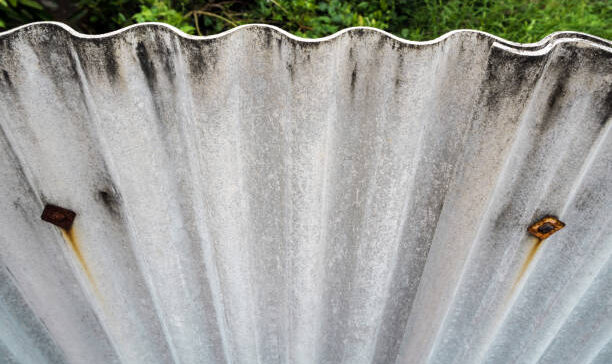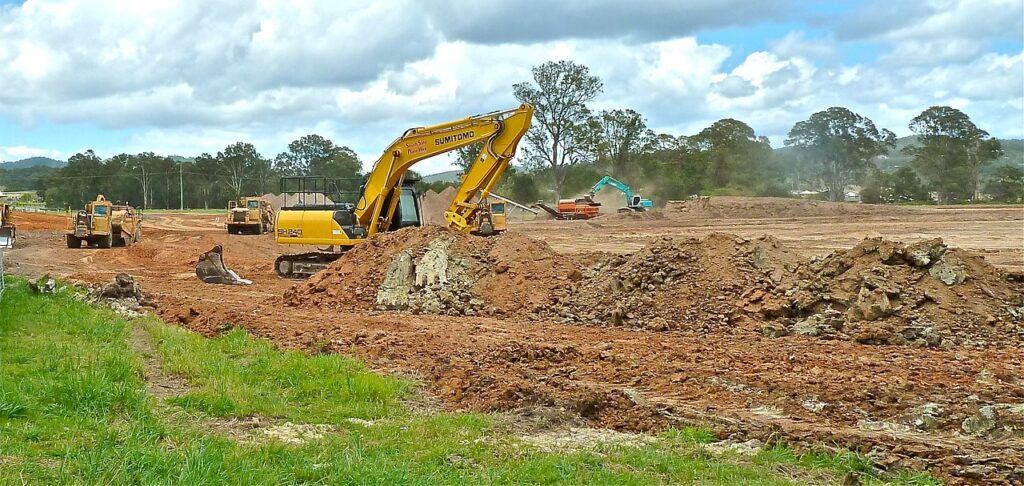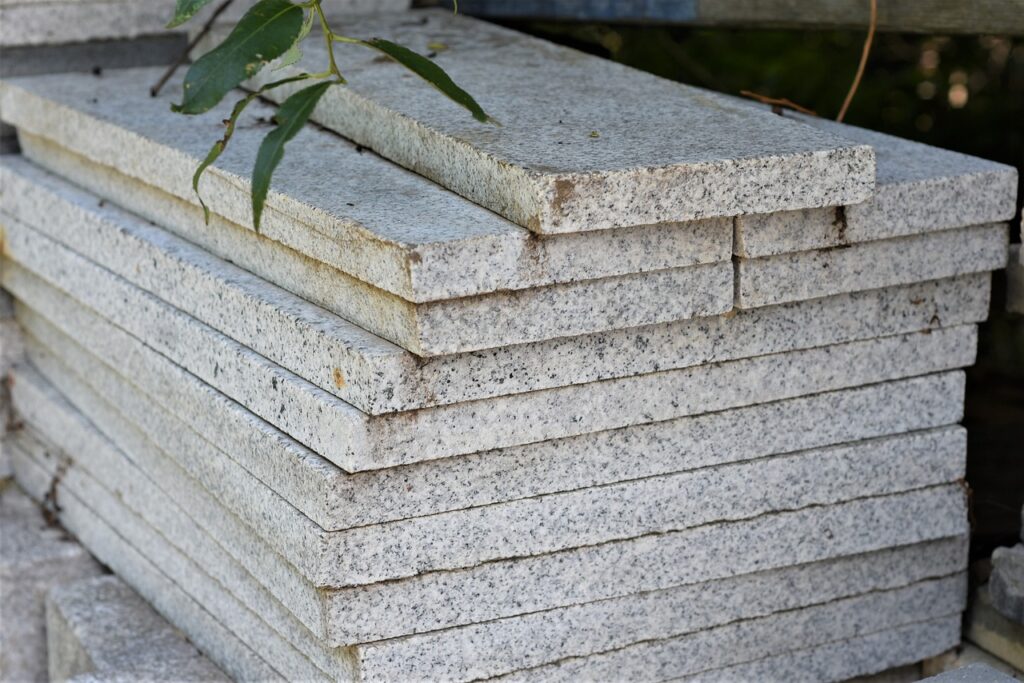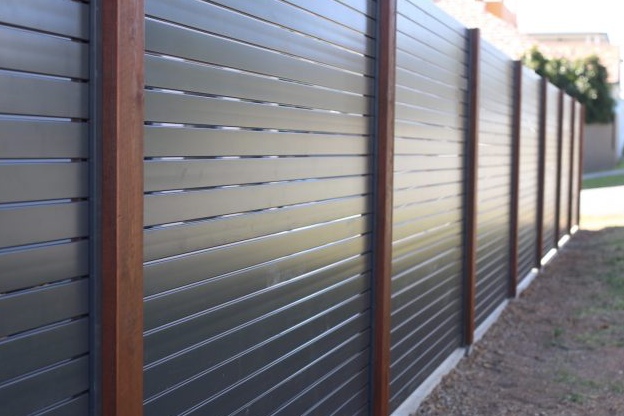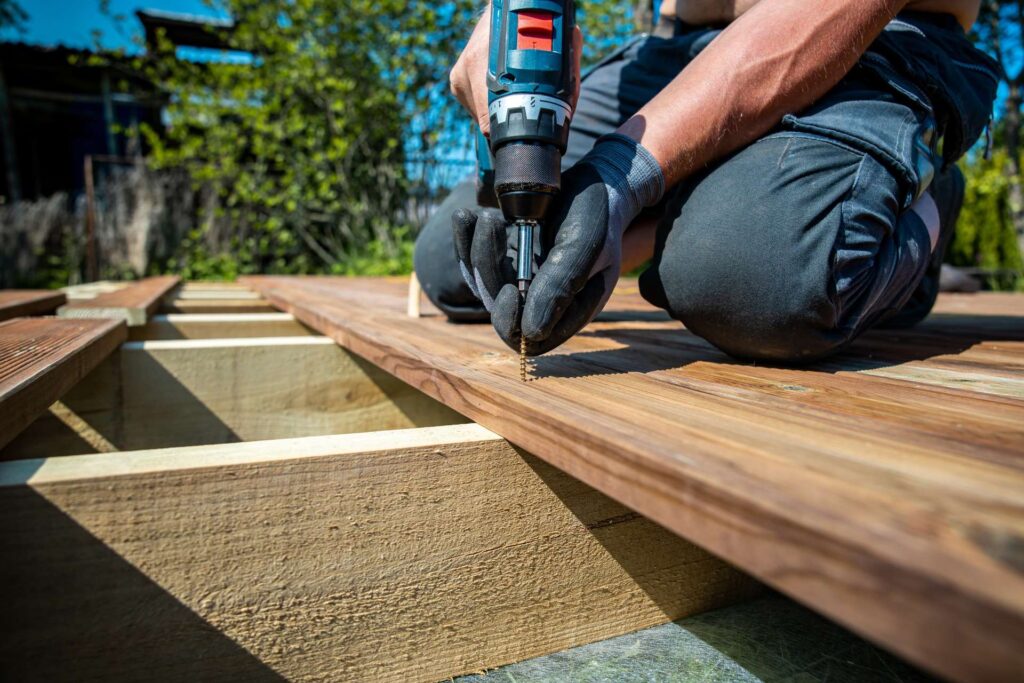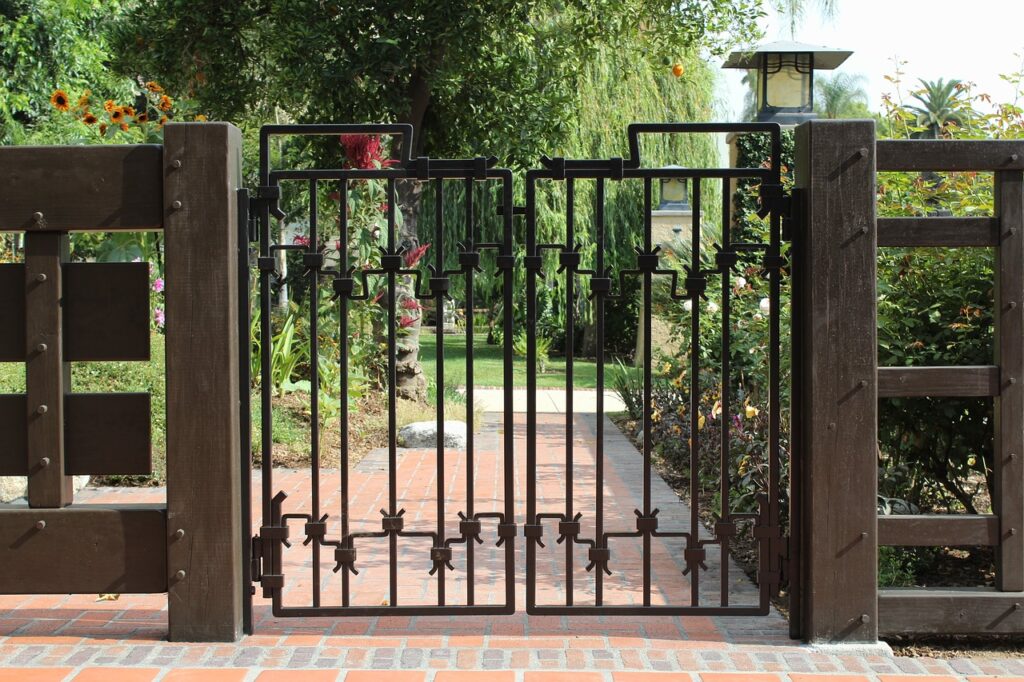Asbestos, a naturally occurring mineral once hailed for its strength and resistance to heat, fire, and electrical damage, has found its way into numerous construction materials over the years, including the humble backyard fence. However, the discovery of its hazardous health implications, particularly when inhaled, has significantly altered the perception and handling of asbestos-containing materials. This shift underscores the importance of professional removal services, especially when dealing with asbestos-laden fences, to safeguard health and ensure safety.
The primary aim of this post is to shed light on the intricacies of asbestos fence removal, with a special focus on the costs involved. As we navigate through this topic, we’ll delve into various factors that influence these costs, including the extent of asbestos presence, the area of fencing to be removed, and the specific requirements set by local regulations. Our goal is to equip homeowners with the knowledge they need to make informed decisions when it comes to safely removing asbestos fences from their properties.
Asbestos fence removal price ranges typically from $50 to $150 per metre, influenced by the fence’s size and length, site accessibility, local disposal fees, and required safety measures. Ensuring safe handling and disposal, professional asbestos removal services mitigate health risks effectively. For an accurate project quote, consulting with licensed professionals is crucial.
- What Is Asbestos?
- Why Remove An Asbestos Fence?
- Factors Influencing Asbestos Fence Removal Prices
- Average Costs Of Asbestos Fence Removal
- How To Choose A Professional Asbestos Removal Service
- Preparing For Asbestos Fence Removal
- After The Removal: Disposal And Cleanup
- FAQs: About Asbestos Fence Removal Price
- Conclusion
- Find A Professional Fence Builder Near You!
What Is Asbestos?
Asbestos, a term that often conjures images of safety suits and warning signs, is a naturally occurring mineral that has been used for thousands of years due to its impressive resistance to heat, fire, and corrosion. It’s a material that once held the title of a ‘miracle mineral’ for its versatility, particularly in the construction industry. This overview delves into the history of asbestos use, the health risks it poses, and the legal and environmental considerations surrounding its removal.
Brief History Of Asbestos Use In Building Materials, Including Fences
The use of asbestos dates back to ancient times, but its popularity soared during the industrial revolution. It was widely used in building materials for its durability and fire-resistant properties. Asbestos can be found in a variety of products, from roofing and insulation to pipes and, notably, fences. Asbestos-containing fences were prevalent due to their ability to withstand fire and their longevity. However, by the late 20th century, the adverse health effects of asbestos exposure became undeniable, leading to a significant decrease in its use and the beginning of strict regulations around its removal and disposal.
Explanation Of The Health Risks Associated With Asbestos Exposure
The health risks associated with asbestos exposure are severe and well-documented. When asbestos-containing materials are disturbed, they release fine fibers into the air, which can be inhaled. Once in the lungs, these fibers can cause inflammation and scarring, leading to serious respiratory issues. The most severe conditions linked to asbestos exposure include asbestosis, lung cancer, and mesothelioma—a rare and aggressive form of cancer primarily affecting the lining of the lungs or abdomen. The latency period between exposure and the onset of disease can be decades long, making it a silent but deadly health risk.
Legal And Environmental Considerations For Asbestos Removal
Given the significant health risks, the removal of asbestos is heavily regulated by laws and guidelines to protect public health and the environment. In many countries, specific regulations dictate the safe removal, transport, and disposal of asbestos. These laws require that asbestos removal be carried out by licensed professionals equipped with the appropriate safety gear and disposal methods. Environmental considerations are also paramount; improper disposal of asbestos can contaminate land and water, posing long-term ecological risks.
Homeowners and building managers must adhere to local regulations when dealing with asbestos-containing materials, often necessitating professional assessments before any renovation or demolition project. The goal is to prevent asbestos fibers from becoming airborne and to ensure that this hazardous material is disposed of in a way that minimizes environmental impact.
In conclusion, while asbestos was once hailed for its utility in construction, the severe health risks and environmental concerns associated with its use have led to strict regulations on its removal and disposal. Understanding the history of asbestos use, recognizing the health implications of exposure, and adhering to legal and environmental guidelines for its safe removal are crucial steps in mitigating its risks and protecting public health and the environment.

Why Remove An Asbestos Fence?
Removing an asbestos fence from your property is a crucial step toward ensuring a safe and compliant home environment. Asbestos, once a popular material for fencing due to its durability and fire-resistant properties, is now known to pose significant health risks, especially when it is damaged or deteriorating. Let’s delve into the reasons why removing an asbestos fence is not just a wise decision but often a necessary one.
Health Risks Associated With Damaged Or Deteriorating Asbestos Fences
The primary concern with asbestos comes from its tiny fibers, which can become airborne if the asbestos-containing material (ACM) is disturbed or damaged. When inhaled, these fibers can cause serious health issues, including asbestosis, lung cancer, and mesothelioma—a rare and aggressive form of cancer primarily affecting the lining of the lungs or abdomen. As fences age or sustain damage from weather or physical impact, the risk of fiber release increases, posing a direct threat to the health of homeowners and their neighbors. Regular monitoring and maintenance can help manage these risks, but removal and replacement of the fence are often the most effective solutions to eliminate potential exposure.
Legal Requirements And Compliance For Asbestos Removal In Residential Areas
Governments around the world have established strict regulations governing the handling and disposal of asbestos to protect public health and safety. These laws typically require homeowners to hire licensed professionals to remove and dispose of asbestos-containing materials safely. Failure to comply with these regulations can result in hefty fines and legal liabilities, especially if improper handling leads to environmental contamination or health issues for others. Before undertaking the removal of an asbestos fence, it’s essential to familiarize yourself with local laws and regulations, obtain the necessary permits, and hire a qualified asbestos removal contractor to ensure the process is carried out safely and in compliance with all legal requirements.
Impact On Property Value And Appeal
Aside from the health and legal implications, the presence of an asbestos fence can also negatively affect the value and appeal of your property. Potential buyers are becoming increasingly aware of the dangers associated with asbestos. A property with an asbestos fence might be viewed as less desirable, potentially leading to lower offers or difficulties in selling the property. Removing an asbestos fence can enhance the aesthetic appeal of your property, making it safer and more attractive to potential buyers. It’s an investment that not only improves the immediate environment but can also pay dividends in the form of increased property value.
The decision to remove an asbestos fence is driven by the need to protect health, comply with legal requirements, and enhance property value and appeal. Given the serious risks associated with asbestos exposure, it’s imperative to approach the removal process with the utmost care, ensuring it is carried out by licensed professionals who can safely and effectively eliminate the hazard from your property. Taking proactive steps to remove an asbestos fence not only safeguards your health and that of your community but also contributes to the overall well-being and safety of the environment.

Factors Influencing Asbestos Fence Removal Prices
When it comes to removing an asbestos fence from your property, various factors come into play that can significantly affect the overall cost. Understanding these factors will help you better prepare for the financial aspect of this necessary but often complex task. Here’s a closer look at what influences asbestos fence removal prices, broken down in a way that’s easy to digest.
Size And Length Of The Fence
One of the most straightforward factors that determine the cost of asbestos fence removal is the size and length of the fence itself. The larger and longer your fence, the more material there is to remove, which directly impacts the amount of labor and time required to complete the job. This means that a sprawling fence surrounding a large property will naturally incur higher costs than a smaller fence that’s only present in a portion of the yard. It’s not just about the physical removal either; the amount of asbestos-containing material that needs to be safely disposed of plays a big role in the cost.
Accessibility And Location
The ease of access to the fence and its location can also significantly influence the removal costs. If the fence is situated in a hard-to-reach area or if there are obstacles that make the removal process more challenging, this can increase the time and labor needed, thus driving up the price. Moreover, the location of your property can impact costs as well. For example, if you’re located in a remote area, the travel time and potential need for specialized equipment to access your property can add to the overall costs.
Presence Of Other Hazardous Materials
The job can become more complicated and costly if there are other hazardous materials present alongside the asbestos. This could include, but is not limited to, lead paint or contaminated soil. The presence of additional hazardous materials requires extra precautions, specialized handling, and potentially more complex disposal methods. This not only extends the duration of the project but also requires the expertise of specially trained professionals, further increasing the cost.
Local Regulations And Disposal Fees
Local regulations surrounding the handling and disposal of asbestos play a crucial role in determining the cost of fence removal. Different areas may have varying requirements for how asbestos must be handled, packaged, and disposed of, which can influence the overall process and expenses. Additionally, disposal fees can vary significantly depending on your location and the facilities available for safely disposing of asbestos materials. In some cases, these fees can be substantial, especially if there’s a lot of material to dispose of.
Removing an asbestos fence is a task that requires professional intervention due to the hazardous nature of the material. While it might seem like a straightforward job, the costs associated with the removal can vary widely based on factors such as the size and length of the fence, accessibility and location, the presence of other hazardous materials, and local regulations and disposal fees. Being aware of these factors can help you better understand the quotes you receive from professionals and ensure that you’re prepared for the financial aspect of the removal process. Always consult with a licensed and experienced asbestos removal specialist who can provide you with a detailed assessment and quote based on the specific conditions of your property.

Average Costs Of Asbestos Fence Removal
Removing an asbestos fence from your property is a critical task that requires professional intervention due to the hazardous nature of asbestos. The cost of this service can vary widely based on several factors, including the extent of the asbestos contamination, the length of the fence, and the location of your property. This guide aims to provide you with a comprehensive overview of what you can expect to pay for professional asbestos fence removal services, including case studies, and an explanation of how quotes are typically determined.
Range Of Prices For Professional Asbestos Fence Removal Services
The cost of asbestos fence removal can vary significantly depending on various factors. On average, homeowners might expect to pay anywhere from $50 to $150 per linear meter for the removal of an asbestos fence. This price range can fluctuate based on the complexity of the project, the accessibility of the fence, and the rates of the professional service you hire.
For a more accurate estimation, it’s essential to get quotes from several asbestos removal specialists in your area. These quotes will take into account the specifics of your project and provide a more tailored cost expectation.
Case Studies Or Examples Of Typical Removal Projects And Their Costs
To give you a clearer idea of what these costs might look like in real-life scenarios, here are a couple of case studies:
Case Study 1: A homeowner in a suburban area needed to remove a 20-meter-long asbestos fence. The removal included safely dismantling the fence, proper disposal of the asbestos materials, and site decontamination. The total cost of this project was approximately $2,500, which equates to $125 per linear meter.
Case Study 2: Another project involved a more complex removal process for a 30-meter asbestos fence located in a difficult-to-access area, requiring additional safety and removal equipment. The total cost for this project was around $5,400, or $180 per linear meter, highlighting how access and complexity can impact the overall price.
Explanation Of How Quotes Are Determined And What They Include
When you contact a professional asbestos removal service, they will typically provide a quote based on several key factors:
1. Size and Length of the Fence: The larger the area of asbestos material that needs to be removed, the higher the cost. This is due to the increased amount of labor, materials, and disposal requirements.
2. Accessibility: If the fence is in a location that is hard to reach or requires special equipment to access, this will likely increase the cost.
3. Condition of the Asbestos: The state of the asbestos material can affect the removal process. If the asbestos is friable (easily crumbled), it requires more careful handling and safety measures, increasing the cost.
4. Disposal: Proper disposal of asbestos materials is a critical part of the removal process. The quote will include the cost of safely transporting and disposing of the asbestos according to local regulations.
5. Decontamination: Following the removal, the area must be decontaminated to ensure no asbestos fibers remain. This process is also factored into the quote.
6. Labor: Skilled labor is essential for safely removing asbestos, and the cost of labor will be a significant portion of the quote.
In summary, the cost of asbestos fence removal varies widely based on the specifics of the project. It’s crucial to get multiple quotes from licensed professionals who can safely and effectively handle the removal and disposal of asbestos. These quotes should provide a detailed breakdown of all costs involved, ensuring transparency and helping you make an informed decision. Remember, dealing with asbestos is hazardous, and prioritizing safety and compliance with local regulations is paramount.

How To Choose A Professional Asbestos Removal Service
Choosing the right professional asbestos removal service is essential to ensuring that asbestos-containing materials are safely and effectively removed from your property. This task requires expertise, experience, and adherence to strict safety standards, making the selection process critical. Here’s a comprehensive guide to help you navigate this process with a human touch, ensuring peace of mind for you and safety for your environment.
Key Qualifications And Certifications To Look For
When embarking on the search for an asbestos removal contractor, the first step is to verify their qualifications and certifications. These credentials are not just pieces of paper; they are assurances that the contractor has the necessary training, knowledge, and commitment to handle hazardous materials safely.
Certification from Recognized Authorities: Look for services that hold certifications from recognized environmental or occupational health and safety organizations. In many countries, there are specific asbestos removal certifications that contractors must obtain before they can legally remove asbestos.
Training Records: Ensure the service provider has up-to-date training records for their employees, demonstrating their commitment to safety and adherence to current asbestos removal practices and regulations.
Experience: While certifications are crucial, experience plays a significant role. Contractors with a long history of successfully completing asbestos removal projects are likely to have encountered and overcome various challenges associated with the task.
Importance Of Choosing A Licensed And Insured Contractor
Opting for a licensed and insured contractor isn’t just a recommendation; it’s a necessity. Here’s why:
Legal Compliance: A licensed contractor is authorized to perform asbestos removal work, ensuring that the service complies with local, state, or national regulations and standards.
Liability Insurance: Asbestos removal comes with risks. A contractor who is insured protects you from liability in case of accidents or damage to your property during the removal process. Ensure their insurance covers both general liability and pollution liability.
Peace of Mind: Knowing that you’ve chosen a contractor who is both licensed and insured offers peace of mind, ensuring that the work will be done safely and professionally, protecting you from potential legal and financial issues.
Tips For Getting And Comparing Quotes From Multiple Services
Getting and comparing quotes from multiple asbestos removal services is not just about finding the best price; it’s about understanding the value and quality of service offered. Here are some tips to guide you:
Request Detailed Quotes: Ask for itemized quotes that break down the costs involved, including labor, materials, and any additional services like post-removal testing. This detail will help you compare services on a like-for-like basis.
Assess Communication and Professionalism: The way a contractor communicates and presents their quote can tell you a lot about their professionalism and the level of service you can expect. Look for clear, concise, and professional communication.
Check References and Reviews: Before making a decision, check references and read reviews from previous clients. This firsthand feedback can provide insights into the contractor’s reliability, quality of work, and customer service.
Consider the Full Package: The lowest quote may not always be the best option. Consider the contractor’s experience, the comprehensiveness of their service, and the peace of mind they offer through their qualifications and insurance.
Choosing the right professional asbestos removal service requires careful consideration of their qualifications, certifications, licensing, insurance, and their approach to providing you with a quote. By taking the time to do your research and making an informed decision, you can ensure that asbestos is removed from your property safely and effectively, protecting the health and safety of everyone involved.

Preparing For Asbestos Fence Removal
Preparing for the removal of an asbestos fence is a critical process that requires careful planning and adherence to safety protocols. Asbestos, once a popular building material due to its fire-resistant properties, is now known to pose significant health risks if its fibers are inhaled. Therefore, if you’re considering removing an asbestos fence from your property, here’s a comprehensive guide to help you navigate the process smoothly and safely.
Steps Homeowners Should Take Before The Removal Process Begins
1. Identification and Confirmation: The first step is to confirm whether your fence indeed contains asbestos. This is usually done through professional testing. Contact a certified asbestos inspector to take samples and analyze them. If the results are positive, you can proceed with the removal process.
2. Hiring Professionals: Due to the health risks associated with asbestos, it’s highly recommended that you hire licensed asbestos removal contractors. They have the expertise, experience, and equipment to safely remove the asbestos without posing a risk to you, your family, or the environment.
3. Notify Your Neighbors: Out of courtesy and for safety reasons, inform your neighbors about the removal process, especially if the fence is close to their property. This will allow them to take any necessary precautions to protect themselves from potential asbestos exposure.
4. Review Local Regulations and Permits: Asbestos removal is heavily regulated. Check with your local health department or environmental protection agency to understand the regulations you must comply with. You may need to obtain specific permits before proceeding with the removal.
5. Preparation of the Site: Before the removal team arrives, ensure that the area around the fence is clear. Remove any plants, furniture, or other items that could obstruct the removal process or get contaminated.
Safety Measures And Precautions For Residents
1. Personal Protective Equipment (PPE): Ensure that the contractors you hire use appropriate PPE, including respirators, gloves, and protective clothing. Although you should not be involved in the removal process, if you need to be near the site, wear protective gear as well.
2. Secure the Area: The removal area should be cordoned off to prevent accidental access by pets or people. Warning signs should be placed around the perimeter to inform everyone of the ongoing work.
3. Dust Control Measures: Asbestos fibers can become airborne during removal. Contractors should use methods like wetting down the asbestos materials to minimize dust and fiber release into the air.
What To Expect During The Removal Process
1. Initial Setup: The contractors will prepare the site by setting up containment and decontamination units. This is to ensure that asbestos fibers do not spread to other parts of your property or into the neighborhood.
2. Removal: The asbestos-containing materials will be carefully dismantled and removed. This might involve cutting the fence into sections and placing them into specially designed asbestos waste bags.
3. Decontamination and Disposal: After the removal, the area will be decontaminated to remove any remaining asbestos fibers. The waste will then be transported and disposed of at a licensed asbestos waste disposal site.
4. Final Inspection and Clearance: A final inspection is typically conducted by an independent asbestos consultant to ensure that the area is free of asbestos contamination. You may receive a clearance certificate, confirming that the area is safe for reoccupation.
Preparing for and executing the removal of an asbestos fence is a complex process that demands attention to detail and strict adherence to safety protocols. By following these guidelines and working with professional asbestos removal services, you can ensure that the process is carried out safely, efficiently, and in compliance with all legal requirements. This not only protects your health and that of those around you but also contributes to the safe and responsible management of asbestos materials.

After The Removal: Disposal And Cleanup
After the removal of asbestos from a building or renovation site, handling the waste and ensuring the area is thoroughly cleaned are crucial steps to safeguard public health and the environment. Asbestos, a hazardous material once widely used for its fire-resistant properties, poses serious health risks when its fibers become airborne and are inhaled. In this detailed exploration, we’ll delve into the regulations governing asbestos waste disposal, how professionals manage the disposal of asbestos materials safely, and the meticulous cleanup processes followed to ensure the area is safe for reoccupation.
Overview Of Asbestos Waste Disposal Regulations
To mitigate the risks associated with asbestos exposure, strict regulations have been established to govern the disposal of asbestos waste. These regulations are enforced by environmental protection agencies and occupational health and safety organizations globally. The key principles include:
Identification and Classification: Asbestos waste must be correctly identified and classified to determine the appropriate disposal method. This classification often depends on the asbestos-containing material’s condition, with friable materials requiring more stringent handling procedures.
Transportation Requirements: Asbestos waste must be transported in sealed, labeled containers to prevent the release of fibers during transit. Regulations specify the type of containers to be used and the labeling information, which typically includes hazard warnings and the origin of the waste.
Licensed Disposal Sites: Only facilities licensed to handle hazardous materials can accept asbestos waste. These sites are equipped to prevent contamination of the surrounding environment and ensure that asbestos is disposed of in a manner that minimizes public health risks.
Documentation and Tracking: Proper documentation is required for the disposal of asbestos waste. This includes tracking from the point of removal to the final disposal to ensure accountability and compliance with regulations.
How Professionals Handle And Dispose Of Asbestos Materials Safely
The process of handling and disposing of asbestos materials is highly specialized to prevent exposure and environmental contamination. Professionals in the field follow a strict protocol that includes:
Wearing Protective Gear: Workers are equipped with personal protective equipment (PPE), including respirators, gloves, and disposable coveralls. This gear protects them from inhaling asbestos fibers and from skin contact.
Sealing and Labeling Waste: Asbestos materials are wetted down to minimize dust, then sealed in double-lined, thick plastic bags or containers. These are clearly labeled with asbestos warnings and other required information.
Controlled Removal Process: The removal area is usually sealed off with plastic sheeting and negative air pressure units to contain and filter the air. This prevents asbestos fibers from escaping into the environment or other areas of the building.
Decontamination Procedures: Decontamination units or areas are set up for workers to safely remove and dispose of their protective gear and to clean themselves before leaving the work site.
Post-Removal Cleanup And Ensuring The Area Is Safe
After asbestos removal, thorough cleanup procedures are critical to ensure the area is safe for reoccupation:
HEPA Vacuuming: High-Efficiency Particulate Air (HEPA) vacuum cleaners are used to clean the area, as they can trap very small particles, including asbestos fibers. This is often followed by wet wiping surfaces to remove any residual dust.
Air Monitoring: Air quality tests are conducted to measure the level of asbestos fibers in the area. This ensures that it falls below the regulatory limits before the area is declared safe.
Final Inspection and Clearance Testing: A certified asbestos consultant usually performs a final inspection and clearance testing. This involves visual examinations and further air sampling to ensure that the cleanup meets regulatory standards.
The disposal and cleanup of asbestos waste are processes that require meticulous attention to detail, adherence to strict regulations, and the expertise of trained professionals. Through these rigorous practices, we can significantly reduce the health risks associated with asbestos exposure and ensure that environments are safe for everyone. The commitment to safe disposal and thorough cleanup is not just about following laws; it’s about protecting communities and preserving the quality of our shared environment.

FAQs: About Asbestos Fence Removal Price
Conclusion
In wrapping up, the paramount importance of enlisting professional services for asbestos fence removal cannot be overstated, given its critical role in safeguarding health and safety. The risks associated with disturbing asbestos—leading to severe respiratory diseases—are too significant to overlook, highlighting the necessity for expert intervention. This underscores the importance of taking proactive steps, such as consulting with a professional for an accurate quote, to fully understand the scope, safety measures, and specifics of the removal process.
Thus, I urge you to take action by reaching out to local experts or our blog’s partnered removal services for more comprehensive advice and a detailed quote. Doing so is not just about adhering to safety protocols but fundamentally about protecting the well-being of yourself, your loved ones, or your employees. Let this serve as a call to action: prioritize safety and health by consulting professionals today, ensuring a safer environment for everyone involved.
Find A Professional Fence Builder Near You!
- Farm Fencing Waikato
- Fence Builders Alexandra, Clyde & Cromwell
- Fence Builders Auckland
- Fence Builders Central Otago
- Fence Builders Christchurch
- Fence Builders Hamilton Waikato
- Fence Builders Invercargill
- Fence Builders Kapiti
- Fence Builders Lower Hutt
- Fence Builders Manawatu
- Fence Builders Palmerston North
- Fence Builders Queenstown
- Fence Builders Taupo
- Fence Builders Upper Hutt
- Fence Builders Wanaka
- Fence Builders Wellington
- Fencing Contractors Levin
- Fencing Contractors Napier
- Fencing Hastings
- Fencing Hawkes Bay
- Fencing Nelson
- Fencing Taranaki, New Plymouth
About the Author:
Mike Veail is a recognized digital marketing expert with over 6 years of experience in helping tradespeople and small businesses thrive online. A former quantity surveyor, Mike combines deep industry knowledge with hands-on expertise in SEO and Google Ads. His marketing strategies are tailored to the specific needs of the trades sector, helping businesses increase visibility and generate more leads through proven, ethical methods.
Mike has successfully partnered with numerous companies, establishing a track record of delivering measurable results. His work has been featured across various platforms that showcase his expertise in lead generation and online marketing for the trades sector.
Learn more about Mike's experience and services at https://theleadguy.online or follow him on social media:

